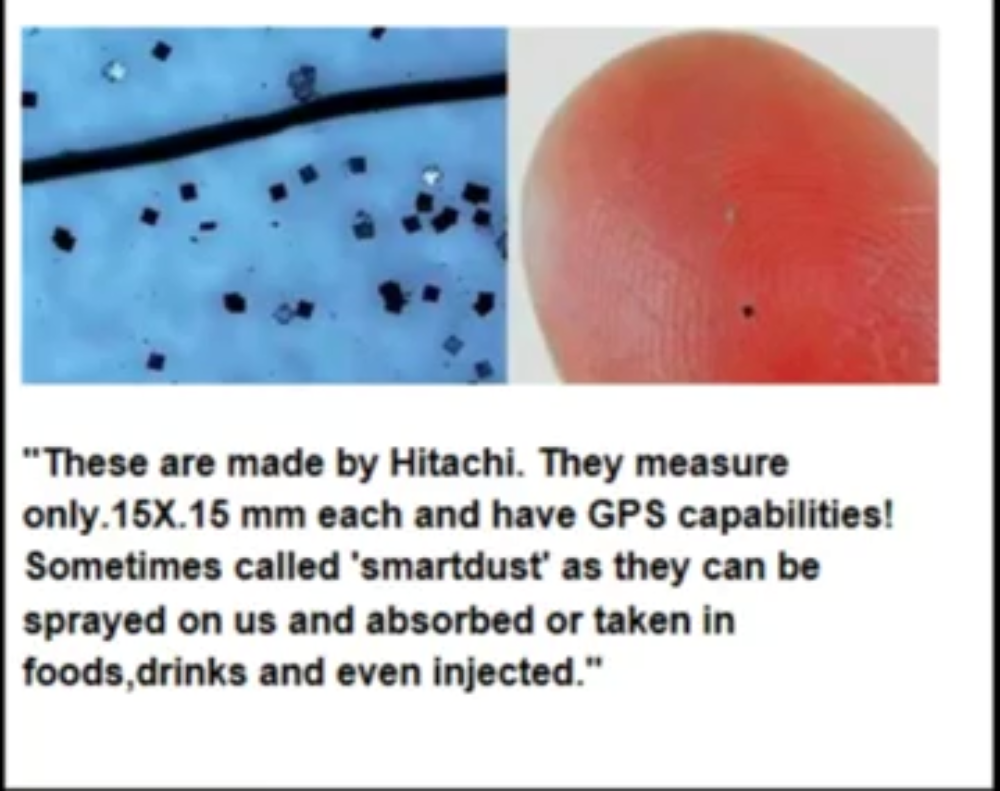Food Packaging Using Nanotechnology Methods: an Overview of ‘Smart Packaging’ and ‘Active Packaging’
(The Demonic Criminals Get “us” to believe that these things are good for us, later we found it being used for mind control.)
Using Clay Nanoparticles to Improve Plastic Packaging for Food Products
How Creating a Molecular Barrier by Embedding Nanocrystals in Plastic Can Improve Packaging
Using Nanotechnology Methods to Develop Antimicrobial Packaging and ‘Active Packaging’
Embedded Sensors in Food Packaging and ‘Electronic Tongue’ Technology
Using a Nanotech Bioswitch in ‘Release on Command’ Food Packaging
Using Food Packaging Sensors in Defence and Security Applications
Problems in Industrial Food Production that Sensors and ‘Smart Packaging’ Will Not Address
Background
Today, food packaging and monitoring are a major focus of food industry-related nanotech R&D. Packaging that incorporates nanomaterials can be “smart,” which means that it can respond to environmental conditions or repair itself or alert a consumer to contamination and/or the presence of pathogens. According to industry analysts, the current US market for “active, controlled and smart” packaging for foods and beverages is an estimated $38 billion – and will surpass $54 billion by 2008. The following examples illustrate nanoscale applications for food & beverage packaging.
Using Clay Nanoparticles to Improve Plastic Packaging for Food Products
Chemical giant Bayer produces a transparent plastic film (called Durethan) containing nanoparticles of clay. The nanoparticles are dispersed throughout the plastic and are able to block oxygen, carbon dioxide and moisture from reaching fresh meats or other foods. The nanoclay also makes the plastic lighter, stronger and more heat-resistant.
How Creating a Molecular Barrier by Embedding Nanocrystals in Plastic Can Improve Packaging
Until recently, industry’s quest to package beer in plastic bottles (for cheaper transport) was unsuccessful because of spoilage and flavour problems. Today, Nanocor, a subsidiary of Amcol International Corp., is producing nanocomposites for use in plastic beer bottles that give the brew a six-month shelf-life. By embedding nanocrystals in plastic, researchers have created a molecular barrier that helps prevent the escape of oxygen. Nanocor and Southern Clay Products are now working on a plastic beer bottle that may increase shelf-life to 18 months.
Using Nanotechnology Methods to Develop Antimicrobial Packaging and ‘Active Packaging’
Kodak, best known for producing camera film, is using nanotech to develop antimicrobial packaging for food products that will be commercially available in 2005. Kodak is also developing other ‘active packaging,’ which absorbs oxygen, thereby keeping food fresh.
Embedded Sensors in Food Packaging and ‘Electronic Tongue’ Technology
Scientists at Kraft, as well as at Rutgers University and the University of Connecticut, are working on nano-particle films and other packaging with embedded sensors that will detect food pathogens. Called “electronic tongue” technology, the sensors can detect substances in parts per trillion and would trigger a colour change in the packaging to alert the consumer if a food has become contaminated or if it has begun to spoil.
Using a Nanotech Bioswitch in ‘Release on Command’ Food Packaging
Researchers in the Netherlands are going one further to develop intelligent packaging that will release a preservative if the food within begins to spoil. This “release on command” preservative packaging is operated by means of a bioswitch developed through nanotechnology.
Using Food Packaging Sensors in Defence and Security Applications
Developing small sensors to detect food-borne pathogens will not just extend the reach of industrial agriculture and large-scale food processing. In the view of the US military, it’s a national security priority. With present technologies, testing for microbial food-contamination takes two to seven days and the sensors that have been developed to date are too big to be transported easily. Several groups of researchers in the US are developing biosensors that can detect pathogens quickly and easily, reasoning that “super sensors” would play a crucial role in the event of a terrorist attack on the food supply. With USDA and National Science Foundation funding, researchers at Purdue University are working to produce a hand-held sensor capable of detecting a specific bacteria instantaneously from any sample. They’ve created a start-up company called BioVitesse.
Problems in Industrial Food Production that Sensors and ‘Smart Packaging’ Will Not Address
While devices capable of detecting food-borne pathogens could be useful in monitoring the food supply, sensors and ‘smart packaging’ will not address the root problems inherent in industrial food production that result in contaminated foods: faster meat (dis)assembly lines, increased mechanisation, a shrinking labour force of low-wage workers, fewer inspectors, the lack of corporate and government accountability and the great distances between food producers, processors and consumers. Just as it has become the consumer’s responsibility to make sure meat has been cooked long enough to ensure that pathogens have been killed, consumers will soon be expected to act as their own meat inspectors so that industry can continue to trim safety overhead costs and increase profits.
Source: ‘Down on the Farm: the Impact of Nano-Scale Technologies on Food and Agriculture’, ETC Group Report, November 2004.
For more information on this source please visit the ETC Group.
Date Added: Jul 25, 2005







